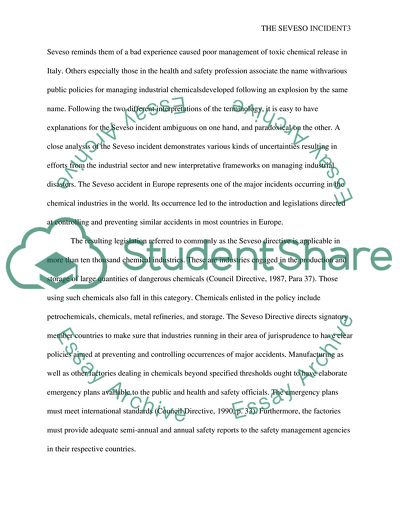Cite this document
(Analysis of Seveso Incident Term Paper Example | Topics and Well Written Essays - 2000 words, n.d.)
Analysis of Seveso Incident Term Paper Example | Topics and Well Written Essays - 2000 words. https://studentshare.org/environmental-studies/1808503-seveso-incident
Analysis of Seveso Incident Term Paper Example | Topics and Well Written Essays - 2000 words. https://studentshare.org/environmental-studies/1808503-seveso-incident
(Analysis of Seveso Incident Term Paper Example | Topics and Well Written Essays - 2000 Words)
Analysis of Seveso Incident Term Paper Example | Topics and Well Written Essays - 2000 Words. https://studentshare.org/environmental-studies/1808503-seveso-incident.
Analysis of Seveso Incident Term Paper Example | Topics and Well Written Essays - 2000 Words. https://studentshare.org/environmental-studies/1808503-seveso-incident.
“Analysis of Seveso Incident Term Paper Example | Topics and Well Written Essays - 2000 Words”. https://studentshare.org/environmental-studies/1808503-seveso-incident.


